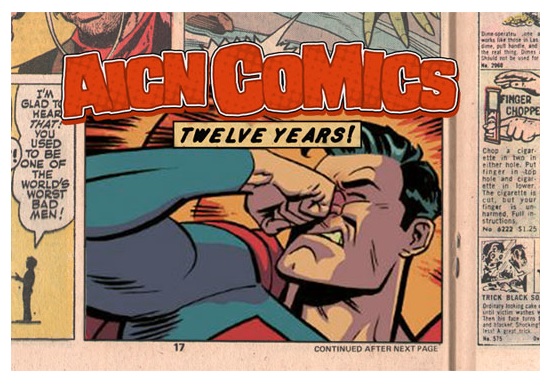
(Click title to go directly to the review)
Advance Review: BATMAN/SUPERMAN #2
THOR: GOD OF THUNDER #10
RED SONJA #1
ANIMAL MAN #22
WHAT IF? AVX #2
Indie Jones presents THE GETTYSBURG ADDRESS: A GRAPHIC ADAPTATION OGN
JUSTICE LEAGUE OF AMERICA #6
ALL NEW X-MEN #14
FABLES #131
DREAM THIEF #3
NOVA #6
Indie Jones Presents THE INVINCIBLE HAGGARD WEST #101: THE DEATH OF HAGGARD WEST
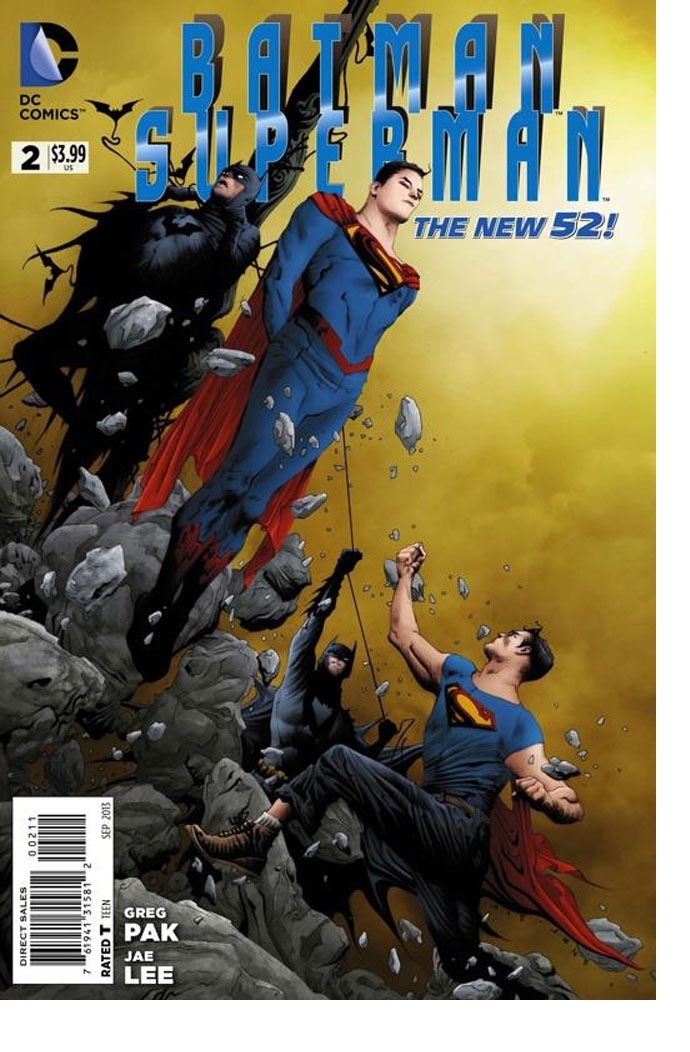
BATMAN/SUPERMAN #2
Writer: Greg PakArtist: Jae Lee
Publisher: DC Comics
Reviewer: Optimous Douche
It’s a rare occasion when I review two books from a series in a row. Generally I like to spread the love, and quite frankly there isn’t much to report on in part deux of today’s trade pacing – merely an extrapolation of the deeds done in issue one.
SUPERMAN/BATMAN #2, however, gets a back-to-back pat on the rump because it’s fucking awesome, and I owe Pak and DC an apology. In my haste to continually chastise their commitment to Flashpoint creating new books that lived in two time periods, I suffocated creativity and also missed clues that after reading issue 2 seem like bitch slaps of obviousness.
One of our fervent fact checkers in the TalkBacks caught where this book was truly going: basically, it’s two…two…two worlds in one book. I was convinced we were witnessing a continuity gaffe that contradicted the first meeting of Bats and Supes in JUSTICE LEAGUE 1 back in 2011. But it was indeed EARTH 2’s Batman which Earth 1’s 5 years before t-shirt Superman collided with in Kansas at the end of last issue. It was also EARTH 2’S Kansas as exhibited by the very alive and breathing Jonathan Kent. As we all know, on EARTH 1 Jonathan was whisked away by a Kansas moving van…wait…I’m sorry, that’s the movie. You know what? Can you honestly blame a man for being slightly confused?
But you know what else? This confusion is almost blissful. For once, the 5 years before coupled with the mixing of alternate reality jumping is comic booky instead of business-oriented in design. As Supermans and Batmans from each Earth are mixed and mingled, being manipulated like they were on a 3-D Star Trek Chess board, a quantum string mystery was woven. The Bobby Fisher of this game remains yet unknown, but she/he/it is presumably an immigrant of Apocalypse given their adroit Boom tube skills and the complete sadism in the way they bend minds as wistfully as they do reality.
To understand what’s really happening in SUPERMAN/BATMAN, a bit of new DC history is very helpful. EARTH 2 is truly an alternate a reality. It’s a world where we didn’t stop trying after the Great Generation, where we weren’t victims to some ethereal man or black government cabal. It’s a world where if something made sense we did it, regardless of Return On Investment. It’s also a world where we as readers of the New 52 never spent any time with the Holy Trinity. They shuffled loose their mortal coils in issue 1 to save Earth from Darkseid and make room for the Justice Society to take over as the world’s “wonders.” This time before that time, though, shows us what a gleaming good place EARTH 2 was before parademons infected it with their uber-stank. Cryoprisons to hold Gotham’s worst baddies, Metropolis powered off solar panels with constant upkeep from Wayne Tech Androids, and also a world where love flourishes whether you’re a man of steel or a damn dirty bat.
The more I learned about EARTH 2 as the series progressed, the more I wanted to learn about its history. How did we form one world government? Where did they zig to utopia where Earth Prime zagged to dystopia? WORLD’S FINEST transplanted denizens Power Girl & Huntress made this pull even stronger as they gobble up resources looking for a way back. Now with SUPERMAN/BATMAN my thirst is somewhat satiated. Batman & Catwoman as man and wife (I’m presuming before Huntress is born), Superman with loving parents and a loving wife. These elements make for very different individuals than what we’ve seen in the New 52. Some can say Superman is akin to his old self before Flashpoint, but this is totally new ground for Bats outside a few Elseworlds stories.
Jae Lee continues to astound with his artwork. While I love his characters, what entrances me the most is the way his style consumes the page, breaking every convention from panels to use of form and shadows (especially the dalliance between Catwoman and Batman of Earth 1 inside the cave.)
It remains to be seen whether this book will break continuity or not. I’m still not sure how the gang will write them out of the corner of BATMAN & SUPERMAN just meeting for the first time in JUSTICE LEAGUE 1, but I’m sure there’s a plan in place. For now, though, I will turn off these nagging nits of universe building to simply enjoy a very well done comic.
Optimous Douche has successfully blackmailed BottleImp to draw purty pictures for his graphic novel AVERAGE JOE coming out in 2013 from COM.X. When not on Ain’t It Cool, Optimous can be found talking comics and marketing on robpatey.com and just marketing on MaaS360.com.
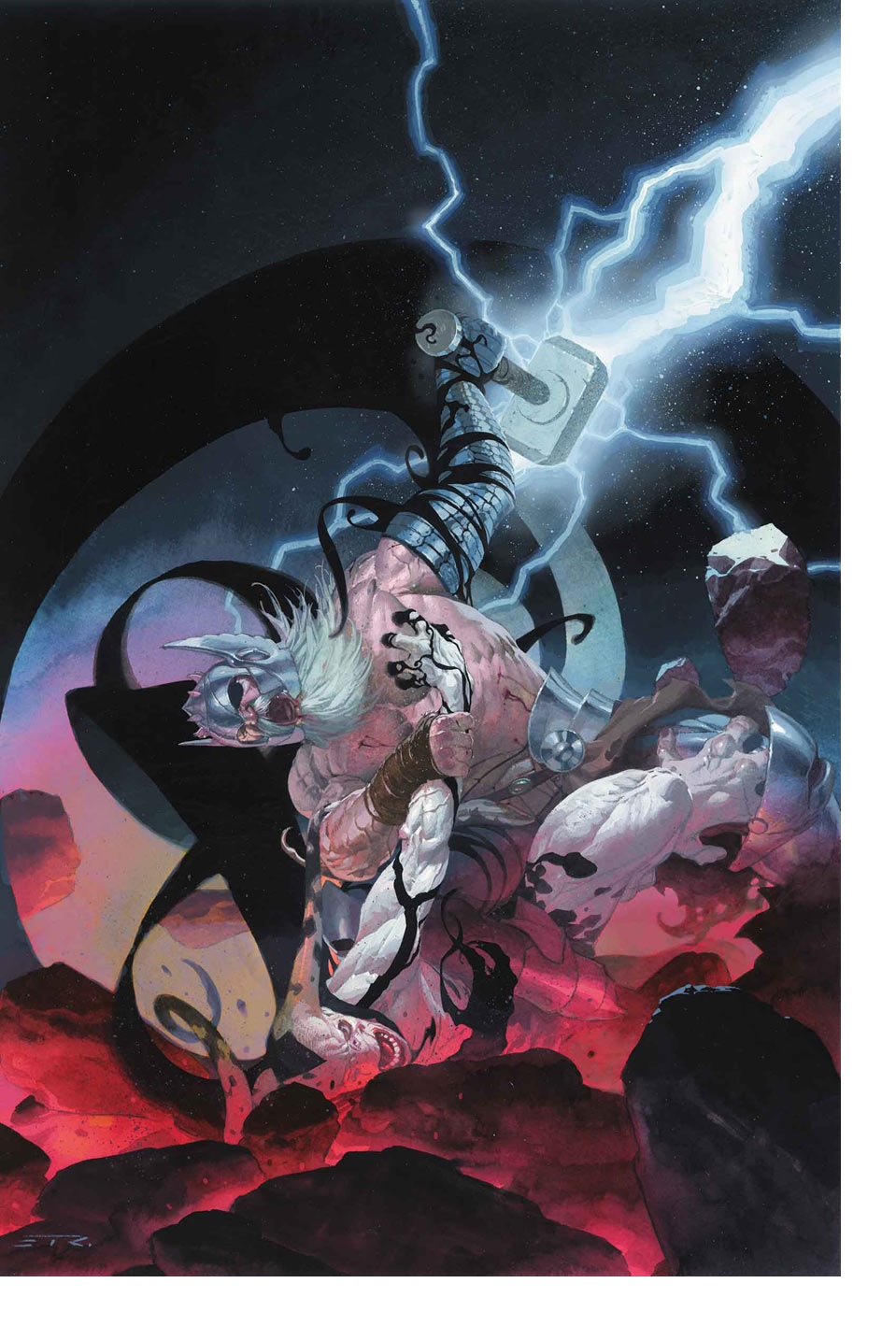
THOR: GOD OF THUNDER #10
Writer: Jason AaronArt: Esad Ribic
Publisher: Marvel Comics
Reviewer: Chris Massari
I think if I had to pick my favorite comic book out right now, THOR: GOD OF THUNDER has definitely been making a strong case for top spot. This book has massive amounts of awesome neatly packed into the pages and really captures the essence of Viking lore. Every time I sit down to read these books I want to blast some Zeppelin or Metallica, then grab myself some ale, but that’s just the pre game warm-ups. Afterwards I feel like I should go pillage a village, maybe throw some large rocks, or just do something that would make the gods of Asgard proud. Aaron has done a near-flawless job on this book series. Every element of this captures Thor as not only a comic hero, but a Nordic deity and Viking hero.
THOR: GOD OF THUNDER feels like everything you’d expect from an ancient legend, from the epic pictures to the humor to the story elements itself. Aaron’s writing has made me feel like these pages are straight out of a Scandinavian book of myths, which brings me to my favorite part still, which are the tattered like pages that fill the artwork commentating like a legend of old, explaining the action in the panels like that of the Iliad or the Bible. It really encapsulates what it means for Thor to be the god of thunder. Alright, so enough of my fan boying the series; now let me get to the review itself.
In THOR: GOD OF THUNDER 10, Part Four of Five of the TO THE LAST GOD arc of the series, Aaron is now finally bringing this ten-issue adventure to a closing. We find all three of the Thors from past, present, and future beaten, broken, and nearing death. Gorr the god killer has begun his final preparations for the finishing touches of his god bomb, created to wipe out all gods in all of existence across time. He is being met by his wife, who has begun praising Gorr and voicing her happiness to see the end of all gods. However, she makes a huge mistake by calling Gorr her own god. This angers the god killer to the point of killing her, his own wife and mother of his child. Gorr is then met by his son, who happens to be looking for his mother. Gorr then directs him off in another direction to avoid him finding out what he just did to his son’s mother. He of course then accidently stumbles upon her body, revealing his father Gorr’s lie. This sparks a pivotal change in story before the three Thors gather their strength and begin another attack on Gorr and the god bomb.
Overall, I cannot think of anything negative to say about the series. I know some have not enjoyed the pacing of the story, but I believe Aaron is doing an excellent job with this. For the ten issue stretch, I haven’t felt any boredom or lost interest in the story. I’ve really enjoyed the character interactions between the various Thors and the Asgardian-styled humor has been spot on. Aaron captures what you could imagine it means to be a Viking god and a story surrounded by Nordic lore, capturing the essence needed for stories of this nature.
As for the artwork of THOR: GOD OF THUNDER, Ribic has been phenomenal with the art in the panels, creating epic pictures to enhance the reading itself. Ribic’s artwork for all ten covers has also been excellent. The character artwork fits the stories perfectly, from the nice details to giving the feel of an older, once again, ancient-like story. I’ve really enjoyed what Ribic has brought to the table for the series.
For me, this team of Ribic and Aaron for their run of THOR: GOD OF THUNDER has been phenomenal, and anyone after them will have a tough time capturing Thor in the way they have. This is one of Marvel’s best comics out right now, and I highly recommend picking it up if you have not already. THOR: GOD OF THUNDER is the type of story a Viking would be proud of.
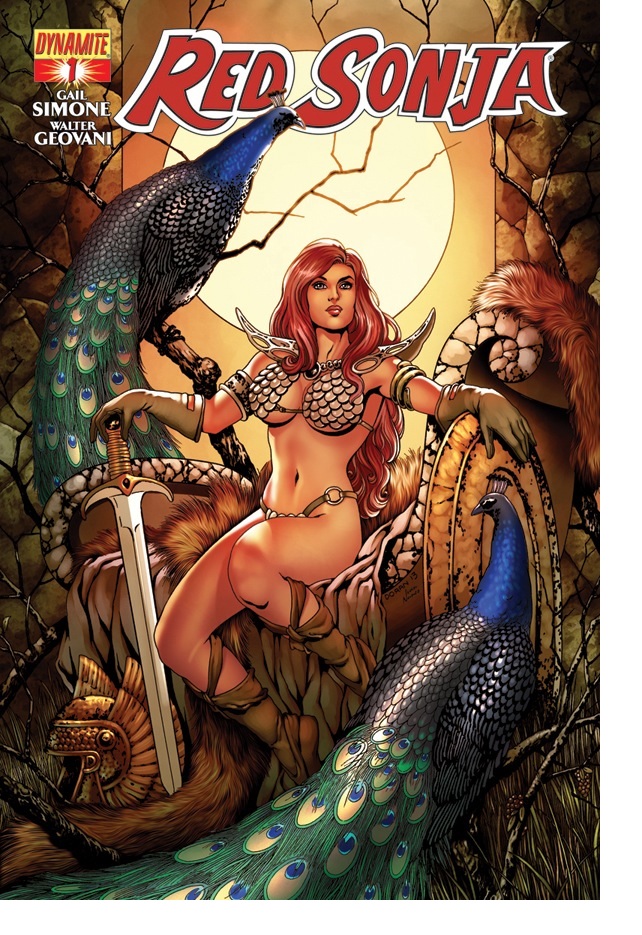
RED SONJA #1
Writer: Gail SimoneArtist: Walter Geovani
Publisher: Dynamite Entertainment
Reviewer: Masked Man
First off, don't be confused by the credits page: Walter Geovani drew the issue, he did not help Gail Simone write it. And with apologies to Geovani, let's face it: the major reason to pick up this book is Gail Simone. Now, while I am a life long sword and sorcery fan, I'm not an uber fan. I don't own every Conan novel or comic, nor have I read much Red Sonja ( I did see the movie--oui). For the most part I just have a healthy respect for the mythical woman made famous by Frank Throne. Although Roy Thomas created her, Barry Windsor Smith first drew her and Esteban Maroto designed her iconic look- funny how that works out. When she went solo (MARVEL FEATURES and RED SONJA) Frank was there. When he left, she was soon canceled.
As for the other redhead of this new series, writer Gail Simone, again I'm a fan, not an uber-fan. Still, I was looking forward to her work on Sonja. As a male writer and fiction lover, I really enjoy female writers on female characters, not because I think women can't write male characters or anything weird like that, but I'm always curious to see how women write women--especially in the sci-fi/fantasy genre. Most male writers are often accused of writing female action heroes as men with boobs. This notion always makes me question how I handle female characters. So to get a chance to read one of the best female comic writers working on one of the best female comic heroes--how do I say no?! Simone usually shys away from female characters, for fear of being typecast as a female writer who can only write female characters (which is BS, but unfortunately a valid fear), so I'm glad she feels it's safe to work on another female character.
Ok, let's get into the review proper now. As I like to say: for better or worse, this is a set up issue. Which is totally fine, but there usually isn't anything to rave about in a set-up issue. It just sets all the pieces on the table and explains the relationship between the pieces, so when poop hits the fan (as it does on the last page) we have something to look forward to. So the basic set-up is that Red Sonja was a prisoner of an evil kingdom for a while and a liberating army freed her. Three years later and the evil kingdom's army is back for revenge, and the good king who freed Sonja asks for her help in dealing with them. One thing I am curious about is: did Simone just rewrite Red Sonja's origin here? Was being a prisoner/pit fighter, then being saved by King Dimath, set her up as the Red Sonja we all know and love? It's not clear, but I assume future issues will make it clearer. To give away the twist ***spoiler ***: another woman was imprisoned with Sonja, and it seems she is just as bad@$$ as Sonja. The two, of course, are now headed for a collision. ***end*** Simone does a fine job with laying everything out, creating an interesting cast (though I thought the 'wonder twins' were a little annoying, but that could be just me), and setting up a good slug-fest. So while I can't say this is awesome, I can't complain about anything either.
Back to the artist Walter Geovani, Dynamite's number one Red Sonja artist. Almost like a set-up issue, I have little to praise Geovani and little to berate him for either. He's a fine comic book artist, with a great eye for detail. Dynamite would be lucky to have someone of his caliber working on all their books, but he often lacks that spark of the superior artist, but I would still say yes, he is prime time.
So Gail and Sonja are off and running and I'm very curious to see what she has planned.
Learn more about the Masked Man and feel free check out his comic book CINDY LI: THREE OF A KIND and CAPAIN ROCKET at www.Toonocity.com
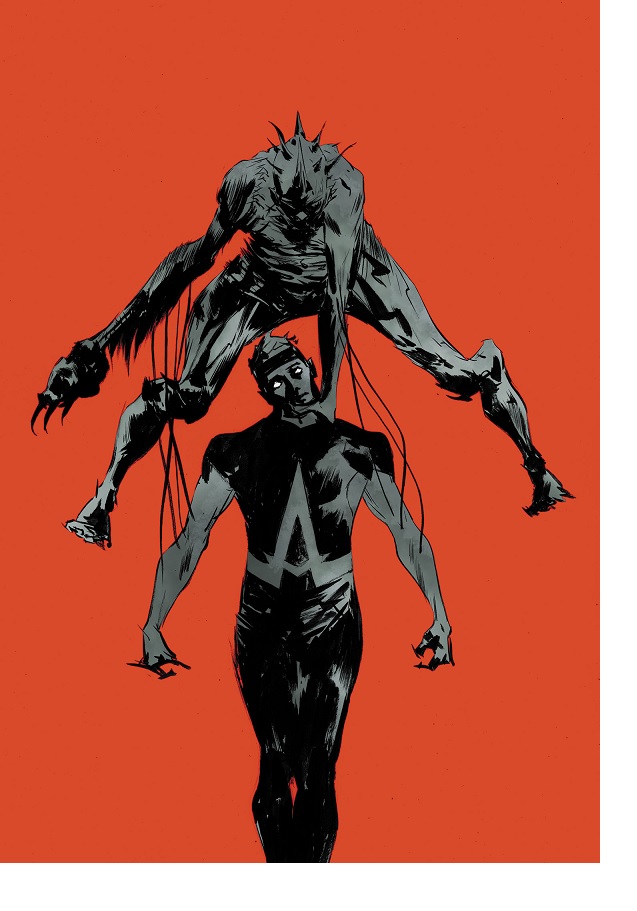
ANIMAL MAN #22
Writer: Jeff LemireArtist: Steve Pugh
Publisher: DC Comics
Reviewer: The Dean
I forgot how good a read ANIMAL MAN had been prior to “Rotworld.” The adventures and complicated family dynamics of the Baker clan made for essential monthly reading early on, but it’s as though the series itself fell victim to the Rot as the cumbersome event slowed it to a relatively lifeless crawl (though it still managed to be one of the better crossovers from the past year, somehow). It wasn’t necessarily bad, but the Green, Red, and Rot struggle proved to be a far more boring concept that I feel even Snyder and Lemire tired of after a while. It didn’t really do SWAMP THING any favors either, but since the crossover’s conclusion both titles have taken a turn for the better, and while a new, perhaps more dedicated creative team has revitalized SWAMP THING, Lemire and Steve Pugh stuck around to continue Buddy Baker’s story . With the focus back solely on their own strong cast of characters, the ANIMAL MAN team is free once again to quietly produce one of DC’s best titles since the beginning of the New 52.
One thing I really liked about “Rotworld” was that it left Buddy in a place where his life as a superhero, a family man, and even an actor have to be questioned, and Lemire and Pugh have taken full advantage of this unique dramatic interplay thus far. It was hard enough maintaining three demanding lives as it was, but now Buddy’s on his own without any sort of support system after his company was deemed far too dangerous by his wife, Ellen. So as Batman’s shown recently, the best way to cope with stress and losing a loved one is to go out and kick a lot of ass! I guess Bruce is a lot better at that than Buddy, though, because in ANIMAL MAN #22 Buddy gets owned by the killers he’d been tracking in previous issues, leading to a pretty horrific blood-drawing that reveals a far more sinister plot headed by an old TEEN TITANS villain and cult leader.
Maxine’s in the middle of a pretty great arc herself as she acclimates to her role as avatar of the Red, but to put it simply, there’s just a lot going on right now in ANIMAL MAN. Lemire’s still relatively new to superhero writing, and up to this point I’ve always considered him to be better suited for creating original work in comics (ESSEX COUNTY, SWEET TOOTH, THE UNDERWATER WELDER), but the way in which he balances and progresses every plot point in just one issue here shows just how good he’s gotten at writing in this particular genre since SUPERBOY (which was a really strong debut for him anyway).
It certainly doesn’t hurt to be teamed up with a great artist to help tell the story, and between Travel Foreman and Steve Pugh, ANIMAL MAN has consistently been one of the more unique-looking issues on the stands every month, to say the least. This issue marks Pugh’s second-to-last with the series for now, with Rafael Albuquerque taking over for who knows how long on issue #24, but this penultimate (such a pointless but fun word to use) work from Pugh is a real splash-fest. We’ve got four interior splashes here (two of them on the right even!), and it makes the issue read a little choppy. It’s unusual and very noticeable since these two are usually right on the money when it comes to pacing a single issue, but either they didn’t have enough pages, or Pugh is just lettin’ it all out before he’s off the title. The splashes themselves are gorgeous, with each of them looking like it could have made a great cover to THE HAUNT OF FEAR back in the day, but they wind up being a distraction more than anything, and I’d say only two of them were actually splash-worthy. Also, how is the villain reveal not one of the splashes? It’s not like its Darkseid or anything, but this was a reveal that totally changed one aspect of the story, and while I know he’s not an A list guy, seeing him show up in what’s barely more than half a page essentially says “Oh, it’s just this dude. Buddy’s gonna be fine, you guys.”
Regardless, this was a great installment to one of DC’s best comics out there. It’s lost a lot of steam since the initial shock of an ANIMAL MAN series being really good again wore off, but this feels like a second wind that could really take the character to new heights. Lemire’s already confirmed Buddy won’t be involved in any TRINITY WAR stuff, so as long as people keep reading and this doesn’t go the way of I, VAMPIRE , it’s a good time to be an ANIMAL MAN fan. Even if it really, really sucks to be him right now.
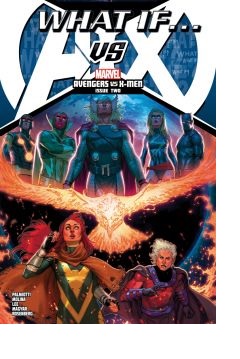
WHAT IF? AVX # 2
Writer: Jimmy PalmiottiArt: Jorge Molina
Publisher: Marvel Comics
Reviewer: Mighty Mouth
I’ve always had a fondness for Marvel’s WHAT IF? Books, and I’m not even sure why. They aren’t always handled particularly well, and they tend to end on a downer. I guess there is just some addictive quality about mucking around with plot points and their subsequent outcomes. The big event comic of 2012 (F#$# the Mayans and their crummy arithmetic), AVENGERS VS. X-MEN, is the latest storyline to receive the WHAT IF? treatment.
Normally, WHAT IF? tales keep to a one or even two issue format. WHAT IF? AVX is being spread out over a four issue miniseries, giving Palmiotti and company a lot more pages to play out their re-interpretation.
Last issue ended with a literal bang as the Helicarrier exploded over the mutant island Utopia. Issue #2 picks up with both teams handling losses and contemplating next steps, as the Phoenix Force ever approaches.
One of the more refreshing shifts in this book is that the heroes for the most part aren’t behaving like complete jerk-faces. Well, with the exception of Namor (but what the hell, that’s Namor). Unlike the original tale where the senseless battle raged infinitely, the Avengers and X-Men quickly realize that their situation is fubar, and slugging it out would only compound the tragedy. In other words, they act like responsible superheroes. Thank you for that, Mr. Palmiotti.
Meanwhile, in deep space, Thor and his strike team of Avengers take their shot at stopping the Phoenix, with less than spectacular results of course. To make matters worse, Magneto and Emma Frost have brought Hope Summers, the mutant beacon attracting the Phoenix, into close range of the entity, and you can guess how that turns out.
Visually speaking, it works for the most part. Molina’s art can be a little unpredictable at times, but it also shines in the right places. Thor’s deep space encounter with the Phoenix and the final page are easily the stand-out panels of this issue.
I wasn’t the biggest fan of the original AVX saga. It just had way too many flat moments for what was supposed to be a 12 issue epic. By condensing the story to a four issue format, WHAT IF? AVX may already be ahead of the curve. If issue two’s ending tells us anything, it’s by the end of this tale we should find out if Cyclops was indeed right.
WHAT IF? stories have no lingering ramifications to worry about. Permitting the writer a consequences-be-damned approach to their storytelling offers readers a chance to deviate from the all-too-familiar formula of mainstream comics. Sure, one could argue that WHAT IF? comics lack drama due to the absence of any true significance, but that’s the real beauty of reading a WHAT IF? title.
You can simply enjoy them without fear of their outcomes sticking.
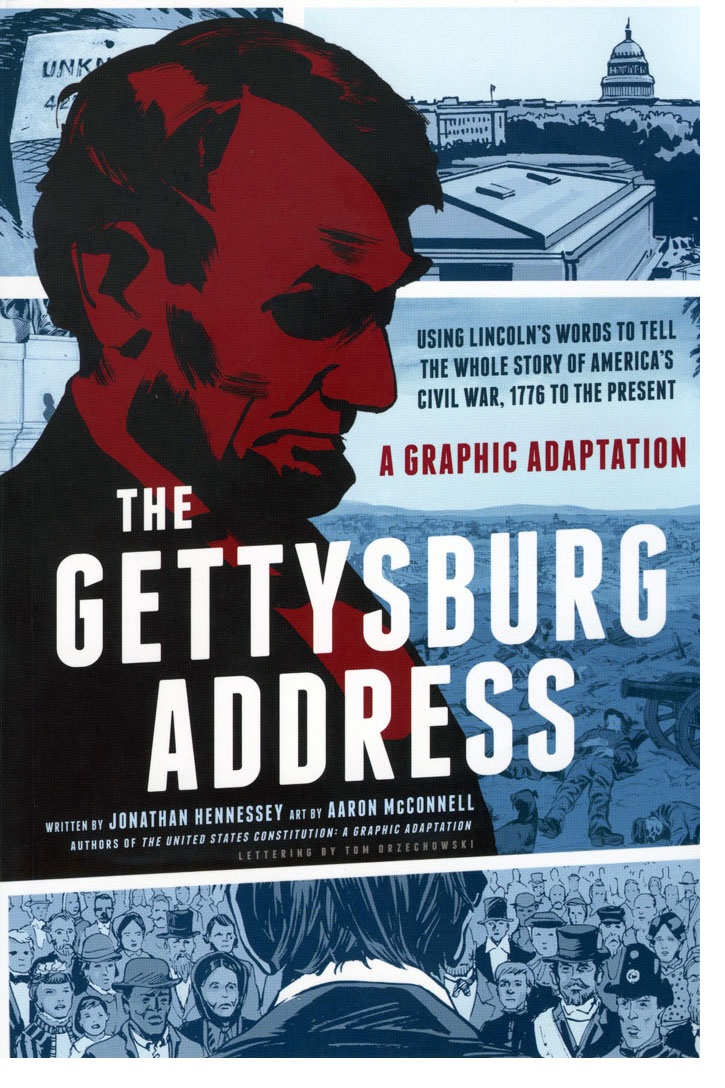

THE GETTYSBURG ADDRESS: A GRAPHIC ADAPTATION OGN
Writer: Jonathan HennessyIllustrator: Aaron McConnell
Publisher: William Morrow
Reviewer: Mr. Pasty
Abraham Lincoln has been resurrected in pop culture in recent years and to varying degrees. Everything I know about the 16th President of these United States I learned from BILL AND TED'S EXCELLENT ADVENTURE. I wish I was joking. Since then, he's turned up in some pretty strange places doing some even stranger deeds, like hunting vampires. He's a fascinating character, no question, and one of the pillars of American history. But what really happened during his rise to power back in the early 1860s? Movie buffs had the chance to find out with Steven Spielberg's LINCOLN, which was well produced, but unfortunately buried under a mountain of criticism for its historical inaccuracies and creative liberties. It's not as though “Honest Abe” was gunning down his opposition, like the “Bear Jew” rat-tat-tatted Adolf Hitler in INGLORIOUS BASTERDS, but the offending items were apparently grievous enough to warrant their share of picket signs.
That's America for you.
The good news is, Jonathan Hennessy is here to try to get the ship back on course. That is, he means to accurately recreate the story of the American Civil War using Lincoln's Gettysburg Address. How well he succeeds may depend on your love of history, as well as your stomach for some of this country's darker moments. This is not Disney's Hall of Presidents. While it's much easier to glamorize the triumphs of yesteryear, we should not – and cannot – do so at the expense of its failures. Hennessy does not allow us to, and I particularly admired his fearless approach to the abolition of slavery. I think one of the book's biggest strengths is its peripheral vision. This isn't just a narrow vision of Lincoln's trials and tribulations, but rather a comprehensive view of how the nation nearly crumbled under the weight of its own discontent. I know the question will eventually be asked about its historical accuracy, and I can say with some degree of certainty that this is probably as close as you can get without having been there.
The second question will be whether or not this works as a graphic novel.
Books like this, no matter how expertly crafted, will still be graded on the competency of the illustrations. There's really no way around it. I'm happy to report that Aaron McConnell delivers. In addition, he resists what I'm sure was the temptation to overdraw his action scenes. The average fanboy might be clamoring for a hail of bullets and bodies flailing in epic spreads of battlefield carnage, but these panels, much like real life combat, are not something glorious and romantic. War is an ugly business, and McConnell's matter-of-fact approach to death and depression elevates the material. Having said that, this is far from an easy read. At 200+ pages, you can't just blow through this while you're getting your oil changed at the local Grease Monkey. Maybe you can, but then perhaps you're reading this as a comic book and not a graphic novel. I think a surface read, while much less daunting, would be a disservice to the creators and yourself. The material can be difficult to assimilate, as it requires you to lower your shield, but it can also be very rewarding. If nothing else, it makes you think about the kinds of things that were worth fighting for back then, and whether or not our current political struggles have lost sight of that.
Web heads who can’t get enough of Mr. Pasty’s word vomit are encouraged to watch him operate as Nostradumbass over at MMaMania.com here. Love, hate and Mafia Wars requests should be directed here.
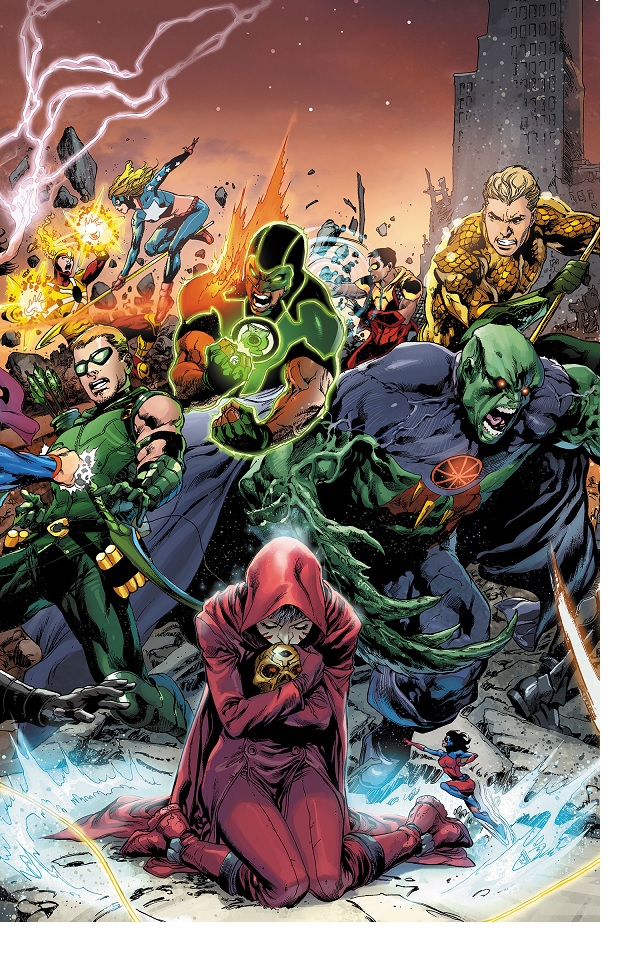
JUSTICE LEAGUE OF AMERICA #6
Writer: Geoff Johns/Jeff LemireArtist: Doug Mahnke
Publisher: DC Comics
Reviewer: Masked Man
Part two of the Trinity War, for those of you not paying attention. This issue wraps up round one of the JL vs. JLA battle (I'm assuming there will be a round two, since this seems to have been the main selling point of this crossover). A little funny that it ends in the usual way--Superman stomping his feet and yelling at everyone to stop. But unlike him taking the usual moral high ground, this time it's because he's afraid of killing someone else—yup, spoiler for ya, Superman kills Dr. Light (seriously, do you live under a rock?).
With Superman now in government care, Wonder Woman and Batman are both trying to figure out what happened--how did Superman just kill a guy? Batman blames Dr. Light himself (who can't control his affect on all things solar powered--even Superman) and Wonder Woman blames Pandora's Box (which possessed Superman for a moment). It was cute to see Batman go after a scientific explanation and Wonder Woman go after a magic one. In an effort to figure out what's going on with Pandora's Box (which we are told is not what it seems, and not even Zeus knows what it is), Wonder Woman seeks the help of Justice League Dark. Now I've never read an issue, but seriously--that's what they call themselves? Justice League Dark? Ookay. Meanwhile, The Question hooks up with Superman to answer the all important question “Who is the evil behind the evil?” I never really knew that was an important question, I just always assumed that Satan is the correct answer. In Johns' usual style he gives us no context to the question, aside from 'hey, isn't this spooky?’ But since we are talking the New 52, I'm guessing the answer is Darkseid (since, historically speaking, Darkseid originally created the Secret Society of Super-Villains – Kirby also described Darkseid as a god Satan would pray to). And aside from the big JL vs JLA vs JLD fight, the bigger question of 'What's the point of Pandora, The Question and The Phantom Strange in the New 52' is suppose to be answered as well. So with DC redefining magic, the Greek Gods, and the New Gods, I assume this will all tie together somehow here since DC also enjoys tying everything together now too and the answer will be Darkseid.
For the most part, this issue builds reasonably well on the last one. All the characters are fumbling around in the dark with the threat, and promise, of big mojo in the air. I'm still bugged by a lot of little things, like how Amanda Waller can have a hard time believing Superman would kill someone when she basically built the JLA because she knew it could happen one day. Batman pooh-poohing Pandora's Box because apparently he hasn't seen enough real life magic, miracles and gods in the New 52. Steve Trevor saying he's still Wonder Woman's friend, even though she turned him into a pariah and he helped create a team to take her down. And did I mention Wonder Woman calling the Justice League Dark team, the Justice League Dark and them being ok with it? I thought that was just the marketing department's idea for the title to help sell the book.
The best part of the book is clearly Superman, Batman and Wonder Woman talking about Superman killing Dr. Light. Imagine your best friend causing a terrible car crash--Johns does a good job creating that feeling. Doug Mahnke does a fine job drawing this all up as well (though I'm not sure why it needed four inkers). While I think Mahnke is better suited for, say, JUSTICE LEAGUE DARK than JUSTICE LEAGUE OF AMERICA (even though he was the regular artist before) he's still an above average artist!
So: issue one $h!t happened, issue two how did this @h!t happen. Despite my misgivings, Johns has got this series right on the razor's edge, and it can become very good or very lame at any moment.
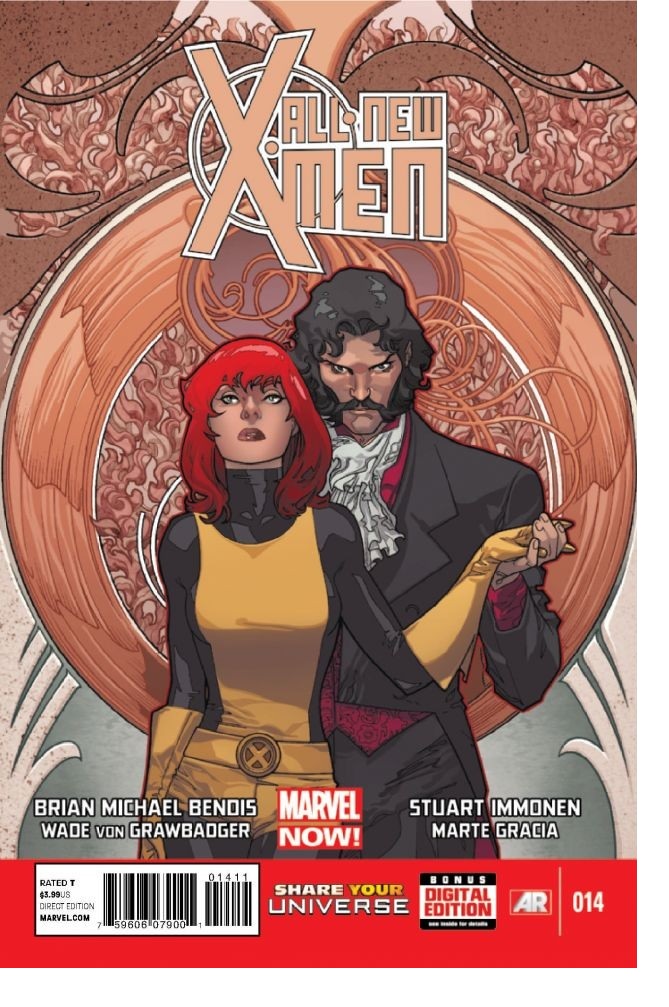
ALL NEW X-MEN #14
Writer: Brian Michael BendisArt: Stuart Immonen
Publisher: Marvel Comics
Reviewer: Henry Higgins is My Homeboy
ALL NEW X-MEN, as a character study, is immensely engaging. It’s interesting, fun to read, funny when it has opportunity and dramatic when it needs to be. In ways, this is one of Bendis’ better titles in recent years. ALL NEW X-MEN, as a story, is fairly lackluster comparatively, remaining dull and directionless. Luckily, the art helps bolster any ill will towards the series.
ALL NEW X-MEN, which has been running full tilt on broken believability since its inception, continues to feel the weight of the dreaded plot. An issue-long fight scene features few memorable moments and is utterly confusing. Quick asides go all over the place, and the sequence ends unceremoniously with the deus ex machina powers of telepathy remembering that this fight could have been over immediately. The ending itself feels weak, and pushes that boundary even closer to the tipping point (the breakout that happened in this series less than a year ago happens again, because of course it does). The plot just isn’t that creative or inventive, and merely distracts from other X-Men titles that are doing something interesting just one book over, with the same characters.
The real strength of the series as a whole has been the character interactions, and this issue maintains it. The best moments are little moments, not merely copy and pasting character archetypes but actually conveying the characters as real people. Characters’ voices stand out with a strong sense of individuality, if being a little hamfisted. Kitty’s monologue just an issue or two ago was very well written, but Bendis’ continual use of her as a Moffat-lite speech machine feels forced here. But the students themselves remain engaging.
The art rises above everything, though, and while it may sometimes feels rushed, Immonen and Garcia were clearly distracted. Beautiful work by both helps elevate the first few pages (and by extension the entire issue) above the rest of the series, as Jean is seemingly consumed by the Phoenix. What follows is a clever use of colour to convey the plot and a great series of broad visuals. The faces and small actions of the characters are incredibly well done. It’s just unfortunate that the story doesn’t keep up with it.
The book succeeds best when it’s small, which has probably been why Bendis has wisely kept the book fairly removed from action. It’s been more concerned with character, playing into Bendis’ strengths. But this issue unfortunately has to spend a good deal of time floating around a muddled, uninspired storyline.
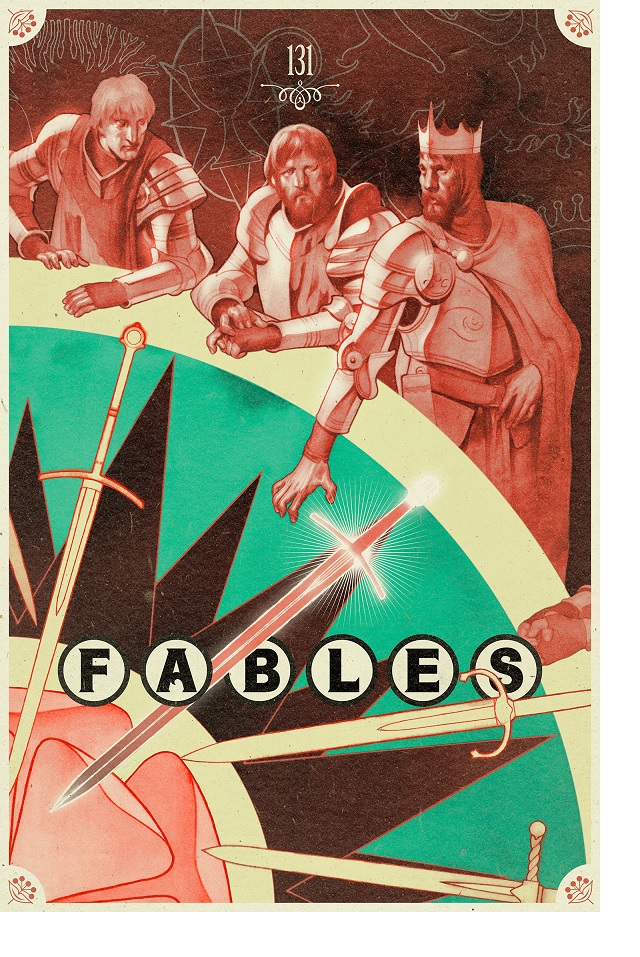
FABLES #131
Writer: Bill WillinghamArtist: Mark Buckingham
Publisher: DC Vertigo
Reviewer: Optimous Douche
A few months ago I had the pleasure of sitting down with Mr. Willingham to chat for an hour about his now ill-fated Kickstarter for his book BIFROST with Frank Cho. The Kickstarter didn’t make its goal, and even at that early stage the ever-pragmatic Mr. W knew the missteps he made. The great thing though about talking to creators for their own pet projects is no PR wonks impeding the conversation when we want to digress into conversations about books with other companies. Since I had Bill on the horn, I asked him for any morsels he could deliver about the future of FABLES. Here’s what Bill had to say then about this issue: “Following that we have an arc called “Camelot”--a restoration of the Round Table and the idea that the powerful and privileged should put that to service in a formalized way. Rose Red starts it all. After two grim arcs, I promised the editors a little ray of hope. Camelot: a brief shining moment. It’s interesting, when you recreate a knighthood of servitude, the type of folks who sign up.
As Anglo descendants, it seems we are inexorably tied to this glory time of Arthurian legend. After every period of dismal downturn, we call the next age Camelot whether it’s really that good or not. The 1960s were a shitstorm when you think about it, yet we still felt the need to dub the era Camelot because our President had such an absurdly large jaw he could squeeze in an extra row of teeth like Great White shark.
FABLES is taking a more literal approach to this gleaming ideal, and to be frank, it needs a little upturn. As Bill said, the past two arcs have been very grim. We had the extended period of Mr. Dark causing trouble for a good two years, and then we quite recently had the horror show that was Babes in Toyland. I never thought a rendition of Toyland could frighten me more than the Keeanu Reeves and Drew Barrymore musical monstrosity that haunted my childhood, but Bill proved me wrong. Over the course of this arc, we saw Fables die (including a talking tiger being devoured by one of the couple’s gaunt little girls), a queen of misfit toys be crowned and also saw that same Queen lose her entire childhood thanks to time being a relative little bitch that goes much faster in Toyland. Dark stuff, and pretty damn impenetrable to any new readers.
Issue 131 not only lightens tone, but is a welcoming jumping-on point for anyone who has been foolish enough to not give this book a chance over the past ten years. It’s also a welcome homecoming for anyone who abandoned ship at the end of the Great War. Personally, I never felt the book slowed down or missed a step, but I have heard compelling arguments from fellow collectors on why that was the end for them. The main grievance was a feeling of an impending end. I can’t argue with that; there were times especially during the Mr. Dark issues where it felt FABLES chapters’ were coming to a close. Well, I’m here to say Camelot not only rejuvenates the book, but is clearly building its own new mythology for the characters beyond what the Brothers Grimm or I bet even Willingham first imagined.
Bigby, who was crystallized during his battle with Brandish, has now become a pet project for the wizards and witches of FABLES. It will take a hell of a lot more than the King’s horses and King’s men to put every glass particle of Bigby back together again. Speaking of Brandish, he’s not quite as done as we once thought. Willingham does a wonderful job bringing him back amidst a very inappropriate conversation between medical colleagues in the middle of Brandish’s autopsy. What’s worse is that most men will not disagree with the logic behind the doctor’s advances towards the now svelte Mrs. Sprat; he just simply needs to work on his delivery. As I mentioned earlier, the Queen of Toyland is back and we’ll get some nice Layla Miller moments as she adjusts to her new womanly form. Last, but certainly not least, is Rose Red’s new mission as the avatar of Hope. She makes a crazy jump to embody her new lot in life as a Camelot mission, but when hasn’t Rose Red been slightly off center?
It’s tough to review a book like FABLES without making it a book report. One really needs seminal issues like this to avoid just delivering a straight-up book report on events. After 131 issues these characters still haven’t tired. Their immortal nature allows them to remain forever trapped in a slow-moving amber of events. Buckingham still crafts every drawing with the utmost care and glorious detail…and those margins…oh, those beautiful and plot point specific margins. For any editor who decries “more white space,” read FABLES and understand how wrong you are.
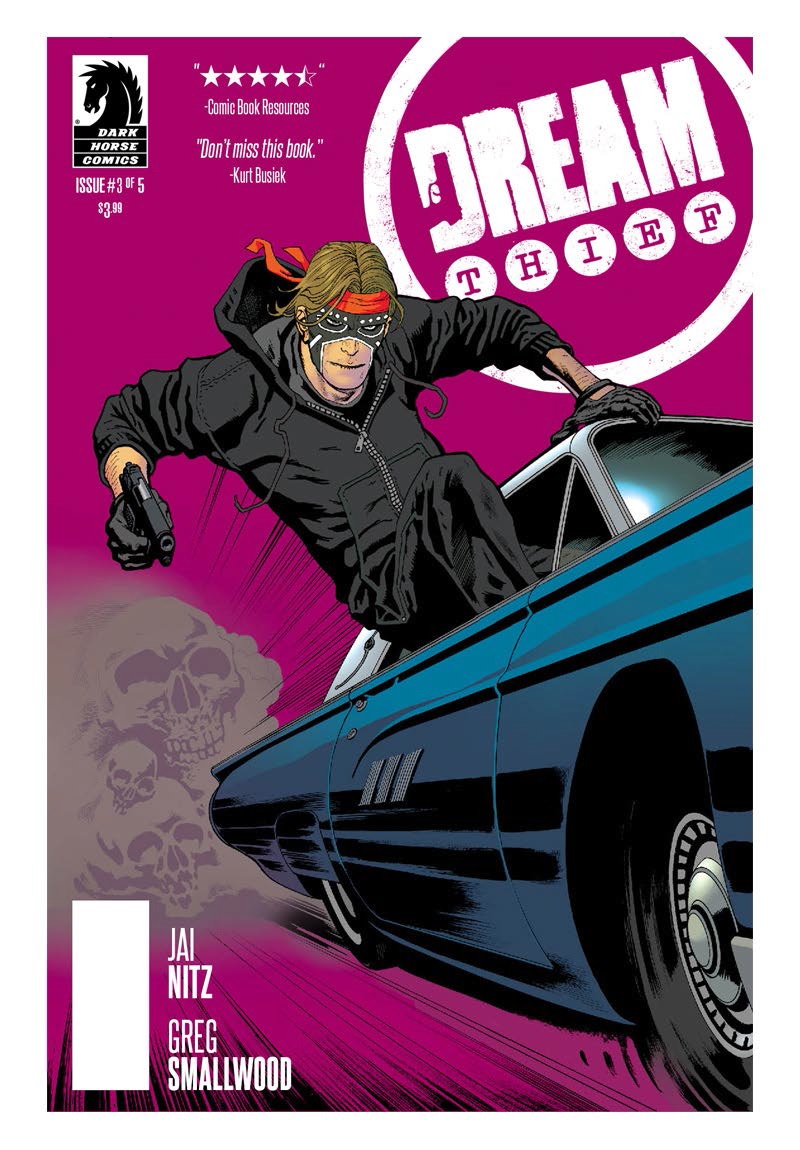
DREAM THIEF #3
Writer: Jai NitzArt: Greg Smallwood
Publisher: Dark Horse Comics
Reviewer: Ambush Bug
The thing I like about Jai Nitz’s new comic DREAM THIEF is that it teeters on the edge of being a convoluted mess. But a likable protagonist and Nitz’s gift for catching up the reader in interesting and fun ways prevents it from doing so every time.
Three issues in and this feels like a book that is never going to run out of cool ideas to exploit as our hero, John Lincoln, stumbles across a peculiar mask and steals it on a dare. Lincoln does a lot of stumbling in his life, barely keeping it together before he finds the mask. Once he wears it, shit really goes sideways as every time he falls asleep he seems to have his mind and body hijacked by the recently deceased. Manipulated by the memories and character traits of the dead, Lincoln finds himself used as a tool of vengeance. In issue one, he wakes up to find himself in a room full of dead gay porn stars with a smoking gun in his hand. Issue two: he wakes to find a Ku Klux Klansman hanging by a rope from a tree with the vague memory that he just performed the hanging. It’s the unpredictable nature of this book that teeters on offensive, but once again saves itself through sheer winning personality every time.
The art in DREAM THIEF is fantastic as well, as Greg Smallwood churns out panels full of grit and creativity. Smallwood’s page configurations are amazing to behold, with just enough sketchiness to make it all seem like some sort of waking dream, but forms which are rock solid and vivid in movement. Just as this story teeters between dreams, memories, and reality, so does the art which balances it all out evenly and perfectly.
At it’s heart, this feels a lot like MEMENTO which also had its strength come from an unlikely hero with a likable voice. Nitz and Smallwood offer up a single serving mystery in every issue as Lincoln must catch up with what trouble his mystical mask has gotten himself into as he sleeps. After three issues, DREAM THIEF has not stopped the pace. Read it for the fun dialog. Read it for the great art. Just read it.
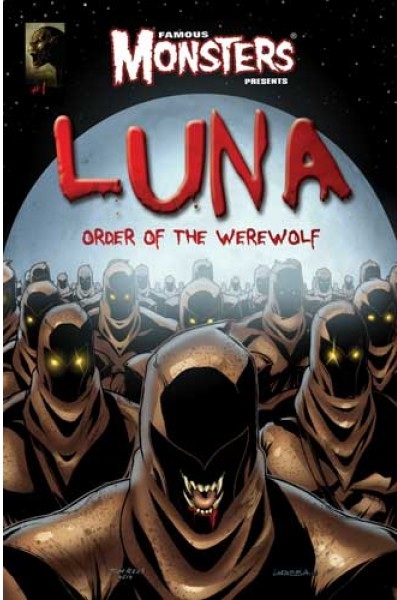
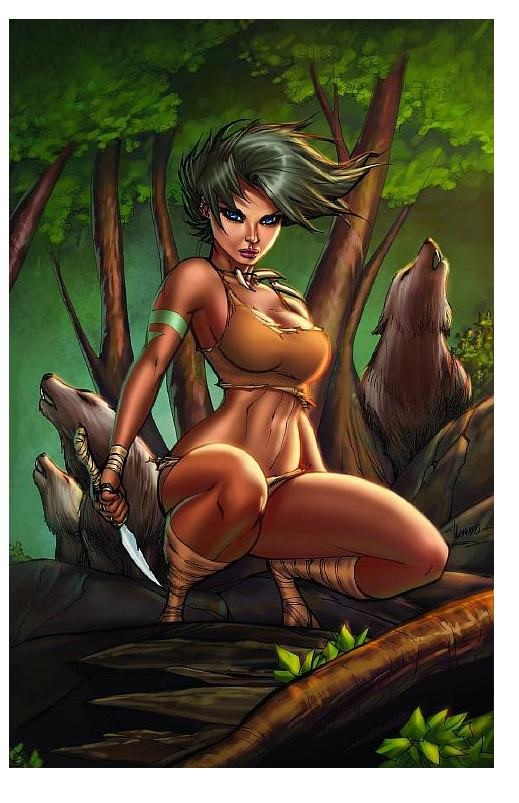 Ambush Bug is Mark L. Miller, original @$$Hole/wordslinger/writer of wrongs/reviewer/interviewer/editor of AICN COMICS for over 12 years & AICN HORROR for 3. He has written comics such as VINCENT PRICE PRESENTS THE TINGLERS & WITCHFINDER GENERAL, THE DEATHSPORT GAMES, & NANNY & HANK (soon to be made into a feature film from Uptown 6 Films). He has co-written FAMOUS MONSTERS OF FILMLAND’s LUNA: ORDER OF THE WEREWOLF (to be released in October 2013 as a 100-pg original graphic novel through Hermes Press). Mark wrote the critically acclaimed GRIMM FAIRY TALES PRESENTS THE JUNGLE BOOK from Zenescope Entertainment & GRIMM FAIRY TALES #76-81. Look for GRIMM FAIRY TALES PRESENTS THE JUNGLE BOOK: LAST OF THE SPECIES available in February-July 2013 and the new UNLEASHED crossover miniseries GRIMM FAIRY TALES PRESENTS WEREWOLVES: THE HUNGER #1-3 available in May-July 2013! Follow Ambush Bug on the Twitter @Mark_L_Miller.
Ambush Bug is Mark L. Miller, original @$$Hole/wordslinger/writer of wrongs/reviewer/interviewer/editor of AICN COMICS for over 12 years & AICN HORROR for 3. He has written comics such as VINCENT PRICE PRESENTS THE TINGLERS & WITCHFINDER GENERAL, THE DEATHSPORT GAMES, & NANNY & HANK (soon to be made into a feature film from Uptown 6 Films). He has co-written FAMOUS MONSTERS OF FILMLAND’s LUNA: ORDER OF THE WEREWOLF (to be released in October 2013 as a 100-pg original graphic novel through Hermes Press). Mark wrote the critically acclaimed GRIMM FAIRY TALES PRESENTS THE JUNGLE BOOK from Zenescope Entertainment & GRIMM FAIRY TALES #76-81. Look for GRIMM FAIRY TALES PRESENTS THE JUNGLE BOOK: LAST OF THE SPECIES available in February-July 2013 and the new UNLEASHED crossover miniseries GRIMM FAIRY TALES PRESENTS WEREWOLVES: THE HUNGER #1-3 available in May-July 2013! Follow Ambush Bug on the Twitter @Mark_L_Miller.
NOVA #6
Writer: Zeb WellsArtist: Paco Medina
Publisher: Marvel Comics
Reviewer: Corey Michael Dalton
I first discovered the character of (Kid) Nova at the impressionable age of 14 in the debut issue of THE NEW WARRIORS. Although he wasn't my favorite Warrior (that would have been Firestar, of course), I still enjoyed the former-high-school-jock characterization of Richard Ryder—there's a gay porn star name if ever I heard one—as well as the dynamic he brought to the group. Watching Rich grow through his relationship with the other characters (especially on-again/off-again love interest Namorita) was kind of like watching Han Solo's transformation from selfish loner to hero in the first Star Wars movie. It didn't matter that Nova's powers were kind of lame, that he wore a bucket on his head, and that he belonged to an interstellar organization that was a blatant rip-off of The Green Lantern Corps because he filled the "jerk" niche on the team and brought a certain amount of dramatic conflict. Based on my love of The New Warriors, I went back and found some old issues of his solo series, The Man Called Nova. I just couldn't get into them. I even tried an issue or two of both of his subsequent series (Nova: The Human Rocket and Nova). Neither grabbed me. Perhaps Nova just works best as part of a team? Or maybe it's the Rich Ryder character who needs the group dynamic?
Well, a few months back, Marvel decided to try out a new character under the Nova helmet to see if Rich was the problem after all (I guess they killed off poor Rich or something.) The new kid is named Sam Alexander and he's only 14—the same age as me when I first discovered Nova. It all comes full circle! When I saw NOVA #1 on the shelves earlier this year, I picked it up to give it a try. Then I saw it was written by Jeph Loeb, so I put it down and slowly backed away (his work never agrees with me.) Now, with issue #6, Loeb has moved on to greener pastures, and the book has been handed over to Zeb Wells, a writer with whom I'm not very familiar.
The cover to NOVA #6 looked promising, depicting the title character wearing a stylish black and red helmet instead of the old yellow and red one and zooming through space directly at the reader, busting through his own logo while screaming in rage or frustration or constipation or something. Look, the expression is ambiguous, OK? But at least the cover seems to hint at some kind of rip-roaring, sci-fi-tinged action/adventure within the comic's pages.
Alas, there was no action or adventure or even constipation to be found within this issue. Instead there was page after page of talking, recapping, lecturing, hugging, counseling, and even more talking. And the talking wasn't particularly good talking. Much of the dialogue came off as forced and unnatural, the conversations clearly being steered by the writer to explain what's happened in the first five issues and to set up the status quo for future issues. Maybe those future issues will be interesting (I hear that the New Warriors are going to pay this kid a visit soon), but I doubt I'll be around to read them. In any case, the writing in this comic was no great shakes. There were a couple sort-of-funny lines ("'Knowing Thor,' is not a religion!") but those were counterbalance by cliched "kid speak" of the worst kind ("I'm boned.")
The art by Paco Medina was fine, done in that mid-2000s Marvel house style that is now kind of dated, but still clean and serviceable. It reminded me a lot of Medina's first few issues of NEW X-MEN: ACADEMY X from way back in 2004. Two pages were wasted with a rather uninformative spread, which was annoying, but Medina's storytelling in the rest of the comic was easy to follow, at least. I question some of the character designs, but I have a feeling those were established by the previous art team. The "Goth" chick at Sam's school, for example, didn't look like a contemporary kid trying to rebel via her looks to me. I mean, we had girls with lip rings and purple streaks in their hair at my high school in 1994! Surely teen styles have evolved a bit since then…
Appropriately, Sam's last line of dialogue in the comic is him asking the world "All right…who needs a hero?" This comes off to me as if the comic itself is actually acknowledging how boring and uneventful the preceding 20 pages were, but is now trying to make a promise that some heroing is going to happen soon. I'll tell you who needed a hero, Sam: the suckers who paid $3.99 for a prologue to your upcoming adventures.
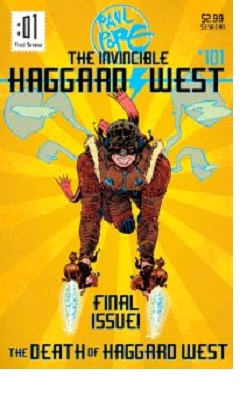

THE INVINCIBLE HAGGARD WEST #101: THE DEATH OF HAGGARD WEST
Writer/Artist: Paul PopePublisher: First Second Books
Reviewer: MajinFu
Paul Pope has released a new comic and it only costs three American dollars.
That’s the gist of it. This comic doesn’t beg to be analyzed as much as it urges you to read it, and then read it again, and then maybe later just pick it up to gaze at all the gorgeous imagery, which isn’t to say this book is lacking in substance. Here the style is the substance. How many comics today reward readers for revisiting a story multiple times while also looking this good?
HAGGARD WEST opens with a plot that is so devastatingly direct and universally terrifying that you’ll want to read it twice just to grasp the drastically dissimilar interpretations. Some children are playing soccer in the street when a gang of hooded boogeyman complete with bony claws and skinny ragged bodies descends en masse upon the poor unsuspecting children, prompting a concerned mother to come to their defense with a kitchen knife, only to be immediately subdued. Right on cue, Mr. West arrives, rescuing the children and taking out the bad guys to save the day in this, his final mission. That’s no spoiler; it’s right there on the fully ironic cover!
In many ways, HAGGARD WEST is a lot like BATMAN YEAR 100 (my personal favorite Bat-book). From the earnest archetype of a seemingly flawless yet human hero in the midst of a most dire situation to the energetic visuals and flowing illustrations, this final (and first) issue of the hero’s saga hits on every pulpy angle with a kind of fearless bravado. This boldness akin to the Kirby crackle lends an endearing charm while enhancing the pulpy tone of the book. This is easily Pope’s most accessible work, suitable for readers of almost any age. This is apparent from the perfectly captured childish anxiety in the beginning all the way through to the simple hero worship at the book’s end.
So yeah, I liked it a lot, and you probably will too. It’s hard to really communicate the pure appeal of this comic, but the very act of reading it was incredibly satisfying. Pope’s knack for detailed action sequences embraces careful attention to each scene’s geography while balancing the spacing and flow of the page to create a truly unique reading experience. This thrilling battle is coupled with a healthy dose of heartfelt humanity as the hero’s daughter witnesses her father’s demise, and must then cope with his death afterward.
Don’t let the absurd numbering of the issue or potentially paradoxical claims of a debuting hero’s “final issue” deter you from checking this book out. This is actually a big, beautiful preview of Pope’s upcoming graphic novel BATTLING BOY, due for a release this October, but how this prequel sets up for that work is still unknown. That probably won’t make re-reading THE INVINVIBLE HAGGARD WEST many times over any less enjoyable, as this book is entirely worth your time. Paul Pope is doing something very, very right. He is keyed into the most primal principles that make comics such a worthwhile medium, and his exuberance for the craft and precise execution make this comic practically invaluable.
Proofs, co-edits & common sense provided by Sleazy G
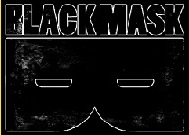 Find out what are BLACK MASK STUDIOS and OCCUPY COMICS here and on Facebook here!
Find out what are BLACK MASK STUDIOS and OCCUPY COMICS here and on Facebook here! Want more in all things Geek?
Want more in all things Geek?Check out PoptardsGo and on Facebook here!
 Get your copy of highly-anticipated anthology TOME by 44FLOOD here!
Get your copy of highly-anticipated anthology TOME by 44FLOOD here!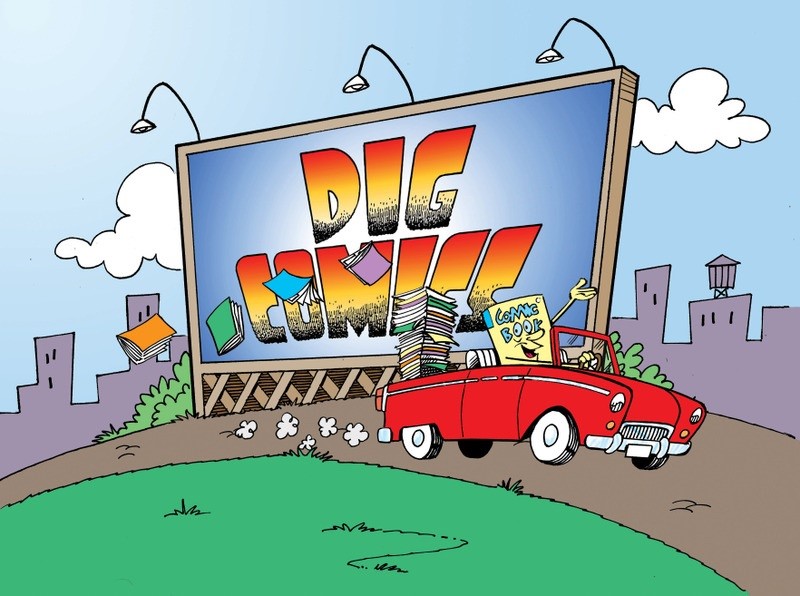 Love comics? So do the folks behind DIG COMICS! Support their Feature Film Kickstarter and share the love by clicking here!
Love comics? So do the folks behind DIG COMICS! Support their Feature Film Kickstarter and share the love by clicking here!Check out AICN COMICS on Facebook and Comixpedia.org!
